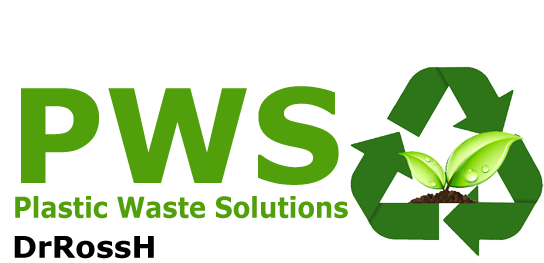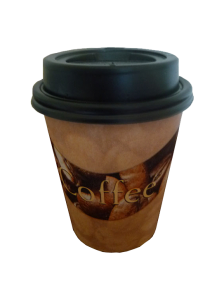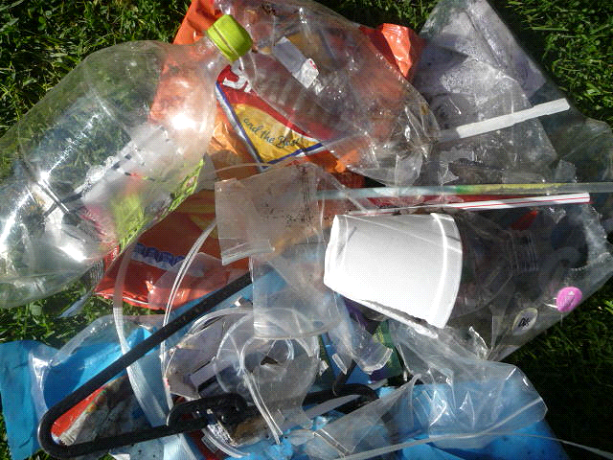Why advanced recycling matters – Australia
Posted on September 8, 2022 by DrRossH in Plastic RecyclingAdvanced recycling is a buzzword that is becoming part of the narrative of the waste industry, and one that had a whole session dedicated to it at this year’s Waste Expo in Coffs Harbour. A panel discussion, chaired by the Australian Food & Grocery Council’s (AFGC) sustainability manager Barry Cosier, took a deep dive into what advanced recycling is, and what impact it can have on the industry.
“The AFGC has been awarded a grant from the government and we’re creating the national plastics recycling scheme to recycle a targeted 190,000 tonnes of soft plastics,” said Cosier. “If those who aren’t aware, a third of all plastic packaging is soft plastics, and it has a recycling rate of about six per cent so it’s a really big problem. But what we want to do is make sure we create a scheme that has a market. Today, we’re going to hear from the whole supply chain.”
Dr Sarah King has a PhD in the circular economy and works as a senior research consultant on the subject at the CSIRO. Her accomplishments include being integral to the development of Aspire, a matchmaking marketplace for the circular economy; and she was also part of the team that delivered the CSIRO Circular Economy Roadmap.
When King was looking into the roadmap as it related to plastics and recycling she realised that there was not enough room in that report to cover off on advanced recycling.
She pitched an internal project to write a paper to understand what advanced recycling is and how it relates to the waste industry.
“Advanced recycling stands for a family of technologies,” said King. “It is where you take a plastic back to a monomer, or back to the chemical building blocks. I see it as complementary to mechanical recycling. There are two major technologies used. The first is depolymerisation – for example where PET can be taken back to a monomer. The second are conversion technologies such as pyrolysis and other hydro-thermal technologies.
“What types of plastics are suitable for these technologies? Mixed multi-layer, flexible and soft plastics, plus some that might be contaminated with food.”
King found that advanced recycling produced intermediate products that need further processing in order to become plastics. She gave pyrolysis as an example, whereby a recycled polymer oil (RPO) is produced, which needs further fractionation into a heavy oil, or light oil. That then goes into a refinery – or steam cracker – and is processed further into a monomer or polymer.
Qenos is a company that manufactures polyethylene and uses advanced recycling technologies to do so. Jeroen Wassenaar, the project leader for advanced recycling at the company, believes that the technology is essential if Australia wants to go from a plastic-to-oil to a plastic-to-plastic supply chain.
“We basically take a fossil, a hydrocarbon, feedstock – it can be ethane gas or naphtha – and we crack that into ethylene, and then we polymerise it into polyethylene,” he said. “Advanced circular plastics recycling is complementary to mechanical recycling and has the opportunity to divert plastic from landfill and reduce fossil fuel use.”
A company like Qenos is basically transforming naphtha or ethane back into a virgin plastic state. It then supplies the finished product to a packaging manufacturer that produces its product and then it becomes waste again.
“Unfortunately, about 80 per cent of it ends up in landfill,” said Wassenaar.
He said that with mechanical recycling there has been success stories such as PET milk bottles being recycled back into their original application. However, once you come across coloured plastics and multilayer structures – and soft plastics come into this category too – it becomes more difficult.
“Usually, the best that can be done is basically down cycle,” he said. “You can put it into a durable application – a bollard or something like that. And you can use it one more time. But what we really want is to keep using it over and over again. This is where advanced recycling can really play a role.”
He said the process can break down molecules into the hydrocarbons that they were made from and then they can be built up again.
“In order to do that, we need these facilities, this infrastructure in the virgin plastic supply chain,” Wassenaar said. “Because without it, we’re basically just producing an oil. That is waste to energy at best, and it’s a very complicated way of doing it.”
With that in mind, Qenos has partnered with Cleanaway to conduct a study to investigate the feasibility of such a plant.
Sealed Air is a company that specialises in food packaging – especially for proteins – and has recently brought to market products such as Cryovac, which has been instrumental in giving foods longer shelf life. This not only means people can keep foodstuffs in their fridges or freezers longer, but it is designed to keep organic waste out of landfills.
Founded in 1960, the company was responsible for bringing the world bubble wrap and has since spent a lot of money on R&D trying to make packaging more feasible and sustainable.
Alan Adams is the company’s sustainability director and he is excited about advanced recycling because he knows that his company is at the coalface of packaging. He knows that with the 2025 packaging targets looming closer, now is the time to act.
“It’s been the right thing to do, to reduce the cost of the packaging and the total amount of materials put out,” he said. “Sealed Air has complex multilayer structures that enable us to deliver high performance. But to use less packaging, it means, ironically, that today we have developed some of the most difficult to recycle structures there are.
“This is my long-winded way of saying we really need advanced recycling, because advanced recycling does give us the capability not only to reprocess these complex structures, but additionally, to give us content we can put back in that can go into direct food contact packaging.”
Nestlé is also in the food space. It has publicly announced that as a company it will reduce its use of virgin plastic by 30 per cent by 2025. To reach this target Nestlé will rely on post-consumer recycled plastics. As a lot of Nestlé’s products are wrapped in soft plastics, which is not only an issue when it comes to collection but also repurposing, reaching these targets could be hard if it relies on the collection of soft plastics alone. Thus, the advanced recycling route is one of its preferred options.
Nestlé’s Oceania head of packaging, Jacky Nordsvan, said that advanced recycling is not only a good idea, but necessary for the company to realise its ambitions.
“To be frank, 85 per cent of the plastic we put on the market is soft plastic,” she said. “And with the type of polyethylene we use, the only way we can get a food-grade recycled content material is through the advanced recycling system at this stage. Without this, we will struggle to deliver a virgin plastic reduction of 30 per cent by 2025.”
The main issue with advanced recycling, as far as Nestlé is concerned, is the supply.
“We’re encouraged to use this material,” said Nordsvan. “The clear benefit of using Australian-made soft plastics, recycled content from advanced recycling material, is that it’s our own materials – it’s not imported from another country’s waste. It’s our own soft plastics that we’ve converted from a resource to a waste.
“The barrier for this is obvious – we don’t have collection at scale; we don’t have processing at scale; and we don’t have recycling at scale to close the loop in Australia. In summary, we really want to use advanced recycled material; we know it’s technically possible, but we just can’t get enough of it, fast enough.”
One person working hard to change that is Danny Gallagher. As well as being the Chief Executive of IQ Renew, he has an interest in REDcycle, which is the most high-profile scheme in Australia when it comes to the collection of soft plastics. He was also instrumental in launching the Curby program. Trialled on the New South Wales’ Central Coast, the aim of Curby is to make up the shortfall that Nordsvan is talking about – getting more soft plastics recycled.
Curby puts soft plastics into yellow bags, which are tagged. The bags are then put into the yellow recycling bins. Once at the MRF, they are separated from the rest of the recycling and taken to be reused for other purposes. Gallagher sees every household as a mini MRF.
“We are leveraging the already existing infrastructure in our homes and communities,” he said. “We already have the convenience at home of the yellow-lid recycling bin, which means we can scale and collect more material. I call it an unmanaged or an unmet demand. We can give a community what it wants and give them an easy way of being able to help us help them, and ultimately, give industry access to that material for recovery and recycling.”
And what about other by-products? What about the fumes that are generated by advanced recycling? What is the risk assessment there?
“In our project, what is paramount is we’re trying to convert as much as possible into plastics,” said Wassenaar. “We’re arriving at about a 60 per cent conversion of the input into circular plastics. Obviously there are by-products. There’s a solid by-product, a char, which is being generated and we’re looking for applications for it in the asphalt arena. Then there is the gas. With some of this gas, it is possible for us to recover it and still process it into plastics – we call this the LPG fraction. There’s very little losses and the kind of fumes that are produced are used to generate the heat for the process itself.”
One subject touched on was traceability and how the advanced recycling program can work across the whole value chain – from the recycling of material to the end product on the supermarket shelves.
“There are some best balance programs. The most reputable one at the moment is ICC+,” said Wassenaar. “It’s basically a chain of custody certification system, which starts at your point of origin – a MRF for example – who is supplying the plastic or the bag to a spec facility. That point of origin probably doesn’t need to be certified but will make a self-declaration in terms of the provenance of the material.”
From there, it will go to the advanced recycling plant, then the manufacturing plant, such as Sealed Air, and then to someone like Nestle who’s putting it on the market, according to Wassenaar. He believes all of those entities will need to be certified according to that same standard.
“It is quite a bit of work involved to get that,” he said. “However, the benefit is that when Nestlé places it on the market, they actually know ‘okay, well this is coming from this origin, and it has this much recycled content’. It is not trivial. It requires a whole-of-value chain of collaboration in order to make that happen.”
“I’d just add, from a packaging manufacturing perspective, this area is actually a driver for us but a lot of work,” said Adams. “We now need to upgrade our systems so that we can track and report transparently on what is recycled content and every product we produce, and be able to report that in an auditable way to meet tax requirements. We already have a system that’s comprehensive that tracks every component and everything we make for food law compliance. That system has been upgraded to track recycled content as well. But behind the scenes, I think every organisation is working towards compliance and transparency.”
In the case of Nestlé, Nordsvan said that traceability is already in place with its products, not only due to it making good sense, but because that is now the expectation of consumers.
“What we want to be able to do is to communicate to our consumers [the journey of the product],” she said. “If we want to put all the information on pack, we have to have a certified system. We’ll be using the ICC+ system to make sure that we can actually follow and trace that material all the way back. It’s not cheap to do, particularly if you’re going to go first – we are going to be paying a premium. But we certainly want to be talking about it loud and proud on pack.”
Finally, where does advanced recycling sit in the waste landscape? Is it the be-all and end-all solution for recycling a difficult stream? King says no, but it will help solve a missing piece of the puzzle.
“What does advanced recycling mean for reuse models?” she said. “CSIRO has acknowledged that we need multiple interventions. I don’t think any of us are here to say advanced recycling is going to solve the plastics problem, because it’s not. It’s not going to displace mechanical recycling and it shouldn’t displace other business models such as reuse, avoid, etcetera. There’s a role for all of them. There’s lots of different technologies that could start up here in Australia to help address that problem, but they won’t do it alone. I’d say we know it’s not a silver bullet solution.”

 How many people today grab a takeaway coffee cup from the local cafe to drink on the go? We don’t know, but the number must be enormous.. Most every one of the above have a plastic top that will last 100s of years. Some cafes still use plastic cups that last a similar time. Is 10 minutes of coffee worth 100s of years of trash?
These items can be seen littering our gutters and on our streets all over the place. If they were all cardboard, they would still be littered, but they would, at least, be gone in a short time.
They do not need to be made of plastic.
How many people today grab a takeaway coffee cup from the local cafe to drink on the go? We don’t know, but the number must be enormous.. Most every one of the above have a plastic top that will last 100s of years. Some cafes still use plastic cups that last a similar time. Is 10 minutes of coffee worth 100s of years of trash?
These items can be seen littering our gutters and on our streets all over the place. If they were all cardboard, they would still be littered, but they would, at least, be gone in a short time.
They do not need to be made of plastic.
 On the way home from the gym last week, a distance of about 1 km (1/2 mile), I counted the items of plastic litter on the curb as I walked. In that short distance I counted 63 pieces of plastic litter. Plastic drink bottles, bottle tops, candy wrappers, plastic film, polystyrene fragments etc. That seemed to be a lot to me. I guess it is a generational thing. Our parents would have been horrified to see that amount, whereas it seems to go unnoticed by our youth of today. In another 20 years how many pieces will there be on this stretch, -- 200? What will today’s youth think of that new amount then when they are older? Will their children be so readily accepting of a higher amount of litter?
On the way home from the gym last week, a distance of about 1 km (1/2 mile), I counted the items of plastic litter on the curb as I walked. In that short distance I counted 63 pieces of plastic litter. Plastic drink bottles, bottle tops, candy wrappers, plastic film, polystyrene fragments etc. That seemed to be a lot to me. I guess it is a generational thing. Our parents would have been horrified to see that amount, whereas it seems to go unnoticed by our youth of today. In another 20 years how many pieces will there be on this stretch, -- 200? What will today’s youth think of that new amount then when they are older? Will their children be so readily accepting of a higher amount of litter?
Discussion · No Comments
There are no responses to "Why advanced recycling matters – Australia". Comments are closed for this post.Oops! Sorry, comments are closed at this time. Please try again later.